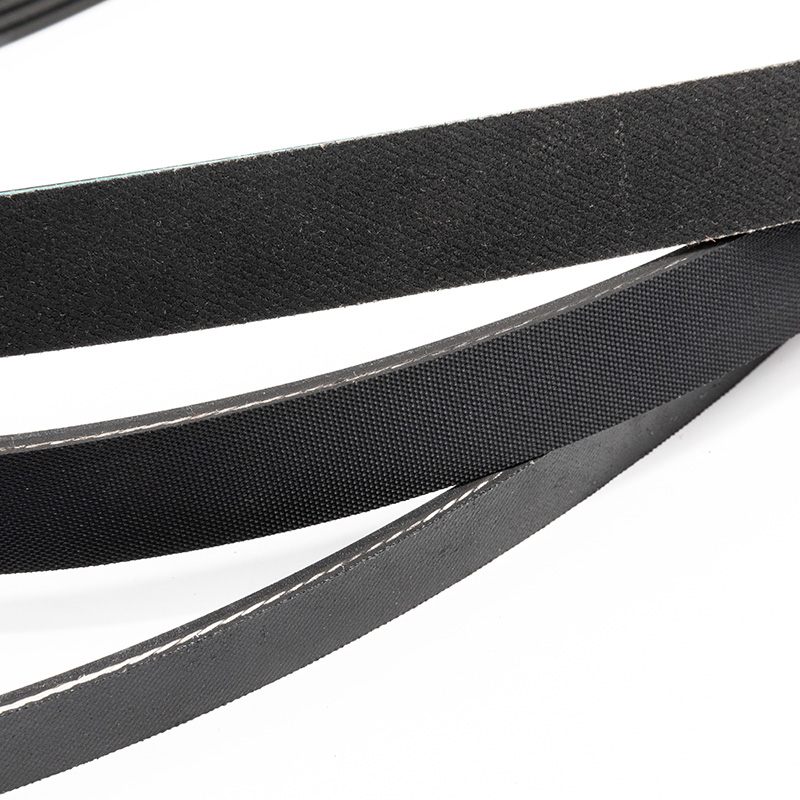When installing or replacing an automotive V-Ribbed belt, there are several important considerations and precautions users should keep in mind:
Inspect Pulleys and Tensioners: Before installing the new V-Ribbed belt, it's imperative to conduct a comprehensive inspection of all associated components, including pulleys and tensioners. Look for signs of wear, such as grooves, cracks, or corrosion, as well as any indications of misalignment. Misaligned or worn pulleys can lead to uneven wear on the belt and premature failure. Additionally, check the tensioner for proper functionality, ensuring it provides sufficient tension to maintain belt integrity throughout its service life. Any components showing excessive wear or damage should be replaced promptly to prevent potential belt failure and costly repairs.
Ensure Proper Tension: Proper tensioning is paramount for the optimal performance and longevity of the V-Ribbed belt. Insufficient tension can cause slippage, leading to reduced power transfer and accelerated wear, while excessive tension can strain the belt and associated components, resulting in premature failure. Regularly monitoring and maintaining proper belt tension during installation and throughout its lifespan are essential for reliable operation and preventing costly repairs.
Avoid Twist or Bend: When handling the V-Ribbed belt during installation, it's essential to exercise caution to avoid twisting or bending it excessively. Twisting or bending the belt beyond its recommended tolerance can cause damage to the ribs, compromising its structural integrity and performance. To prevent such damage, handle the belt gently and ensure it maintains its natural curvature without any forced manipulation. Additionally, inspect the belt for any signs of deformity or irregularities before installation, as even minor damage can escalate into significant issues over time. By exercising care during handling and installation, users can preserve the integrity of the belt and enhance its service life.
Clean Pulleys: Prior to installing the new V-Ribbed belt, thoroughly clean all pulleys to remove any accumulated dirt, debris, or residue. Contaminants on the pulley surfaces can interfere with the belt's grip and traction, leading to slippage and premature wear. Utilize a suitable cleaning solution and a clean cloth or brush to meticulously remove any foreign substances from the pulleys' grooves and surfaces. Pay particular attention to areas where the belt makes direct contact with the pulleys to ensure optimal traction and performance. By maintaining clean and debris-free pulleys, users can mitigate the risk of belt slippage and prolong the lifespan of the V-Ribbed belt.
Handle with Care: The V-Ribbed belt is a precision-engineered component designed to withstand the rigors of automotive operation. Therefore, it's essential to handle the belt with care during installation to prevent any damage that could compromise its performance and longevity. Avoid exposing the belt to sharp edges, rough surfaces, or excessive bending, as these actions can cause abrasions, cuts, or deformation of the belt ribs. When transporting or storing the belt, ensure it remains flat and free from any objects that could cause harm. By treating the V-Ribbed belt with the appropriate level of delicacy and respect, users can safeguard its structural integrity and ensure reliable operation in their vehicles.
Replace Belt Tensioner: The belt tensioner plays a critical role in maintaining the optimal tension of the V-Ribbed belt throughout its service life. Over time, the tensioner may experience wear or fatigue, compromising its ability to provide adequate tension to the belt. Therefore, it's advisable to replace the tensioner simultaneously with the belt to ensure consistent performance and longevity. By proactively replacing the tensioner, users can mitigate the risk of tension-related issues and enhance the overall reliability of their vehicle's belt drive system.
Automotive V-Ribbed Belts


 View More >>
View More >>
 View More >>
View More >>
 View More >>
View More >>
 View More >>
View More >>
 View More >>
View More >>
 View More >>
View More >>
 View More >>
View More >>
 View More >>
View More >>
 View More >>
View More >>
 View More >>
View More >>
 View More >>
View More >>
 View More >>
View More >>